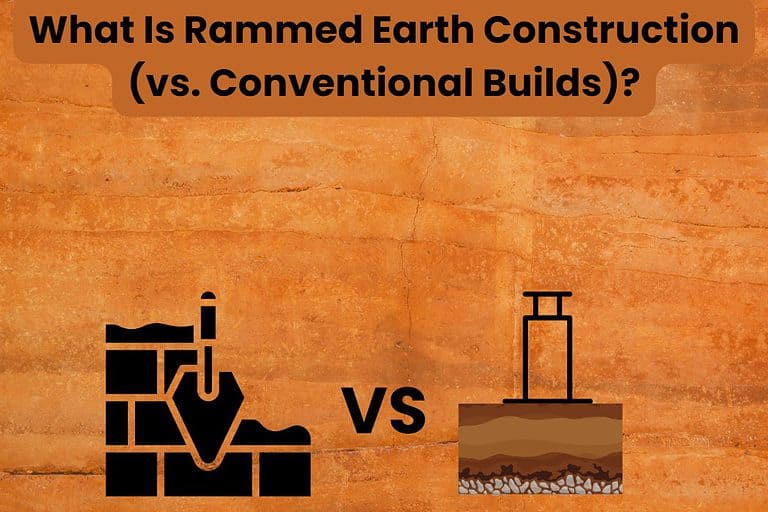Bamboo Density for Building: Which Is Strongest (With Chart)

Bamboo is an ideal sustainable building material similar in strength to concrete and steel.
However, it’s worth noting that the strength of bamboo depends on its density – the denser the bamboo, the stronger it is, and the more suitable it is for building. That’s why it’s helpful to know the density of any bamboo you plan to use for construction.
The strongest bamboo for building is the Bambusa dissimulator. The Bambusa dissimulator bamboo species has a density of 0.78 g/cm3, the highest among all building bamboo. This high density results from its thick culms and closely packed sclerenchyma fibers.
In the rest of this article, I’ll discuss the science of bamboo density.
I’ll go through everything you need to know about bamboo density for building so you can get the best species for construction.
Let’s get started!
The Science of Bamboo Density

Density is a crucial factor that determines the strength of bamboo. The strength comes from the sclerenchyma fibers that have specialized cells that provide rigid support to the plant structure.
Species type, age, growing conditions, lignin, and cellulose influence bamboo density.
Some bamboo species are naturally denser than others due to the composition of sclerenchyma cells. For instance, species like Bambusa dissimulator and Bambusa tulda have higher densities than those like Guadua angustifolia and Guadua spinosa.
You might have heard experts say that only mature bamboo should be used for construction. This is due to the impact of age on bamboo density and strength.
This study found maximum tensile strength in bamboo aged between 4.5 and 6.5 years old. This is because bamboos within this age bracket have higher densities caused by the constant deposition of lignin in mature fibers.
Lignin and cellulose contribute to the stiffness and strength of the plant’s cell walls, affecting its overall density.
Cellulose is a polymer that crystallizes into strong fibers and is the primary strengthening material in bamboo.
Coupled with this, lignin is a polymer that acts as a binder for cellulose and the two components form strong and closely packed fibers that increase the bamboo’s density and strength.
Finally, the growing conditions, such as water and soil fertility, affect the structural composition of bamboo, which in turn impacts density. For instance, bamboo grown in nutrient-dense soil with sufficient water develops stronger cell walls and higher density.
Bamboo Density for Building

Bamboo density refers to the mass of bamboo material per unit volume, typically measured in grams per cubic centimeter (g/cm3).
Different bamboo species have varying densities, some much denser than others.
However, bamboo has a much lower density due to its hollow culms than hardwoods such as oak and maple. Despite this, it’s still a stronger material for construction and other applications, although not as durable.
Bamboo species with high densities are preferred for construction due to their high tensile and compressive strength.
The average densities of bamboo species used in building range from 0.451 to 0.780 g/cm3. Dendrocalamus, Guadua, and Bambusa bamboo genera have density values within this category.
These species are preferred for building as they have sufficient densities that translate to excellent tensile and compressive strength.
A point worth noting is that the bamboo density increases towards the outer layer of the culms and decreases towards the inner layers. This is due to more fibers and sclerenchyma cells on the outermost layers of the culms.
One common thing you’ll notice between Dendrocalamus, Guadua, and Bambusa bamboo species is that they are taller since they grow in the tropics.
As already mentioned, density is inversely proportional to diameter in bamboo. Therefore, the smaller the diameter, the denser the bamboo, and vice versa. Does this mean Dendrocalamus, Guadua, and Bambusa bamboo have smaller diameters?
According to research by Research Gate on different bamboo species, it was found that density increases along the culms from the bottom toward the top sections.
Consequently, since bamboo strength increases with height, using sections near the top of taller bamboo species like Guadua, Bambusa, and Dendrocalamus is good for building.
Besides their application in construction projects, the above bamboo species with high densities are also suitable for plywood and engineered wood Cross-Laminated Timber (CLT) and Laminated Veneer Lumber (LVL).
The table below shows the common bamboo types used for building, CLT, and LVL, with their densities listed in order, strongest first:
| Bamboo Species | SL (m) | DBH (cm) | IL (cm) | NI (unit) | DW (kg) | BD (g/cm3) |
| Bambusa dissimulator | 9.52 | 4.58 | 41 | 23 | 5.19 | 0.780 |
| B. tulda | 11.90 | 6.56 | 49 | 24 | 11.89 | 0.773 |
| B. vulgaris | 10.70 | 8.06 | 32 | 33 | 12.45 | 0.747 |
| B. Vulgaris var. vittata | 9.30 | 7.22 | 34 | 27 | 10.27 | 0.730 |
| Ochlandra travancorica | 11.30 | 9.40 | 40 | – | 26.00 | 0.704 |
| B. malingensis | 7.36 | 4.33 | 28 | 26 | 3.49 | 0.700 |
| B. textilis | 8.13 | 4.77 | 44 | 18 | 3.80 | 0.690 |
| Dendrocalamus latiflorus | 11.50 | 11.50 | 37 | 31 | 21.58 | 0.683 |
| B. beecheyana | 8.97 | 7.80 | 28 | 32 | 10.50 | 0.670 |
| D. strictus | 10.00 | 7.60 | 38 | 26 | 8.94 | 0.667 |
| Guadua amplexifolia | – | – | – | – | – | 0.654 |
| B. stenostachya | 15.10 | 8.17 | 35 | 43 | 17.50 | 0.653 |
| B. ventricosa | 9.30 | 4.84 | 44 | 21 | 4.47 | 0.640 |
| B. tuldoides | 9.15 | 4.26 | 46 | 19 | 3.75 | 0.620 |
| B. nutans | 9.95 | 5.83 | 38 | 26 | 7.75 | 0.615 |
| B. oldhamii | 9.93 | 6.94 | 41 | 24 | 8.37 | 0.608 |
| D. asper | 14.50 | 12.20 | 34 | 43 | 36.93 | 0.599 |
| G. superba | – | – | – | – | – | 0.559 |
| D. giganteus | 16.00 | 14.20 | 34 | 47 | 40.73 | 0.552 |
| G. spinosa | – | – | – | – | – | 0.489 |
| G. angustifolia | – | – | – | – | – | 0.451 |
Table 1: Bamboo types for construction and their densities in order. Source: UFG
Where:
- SL: Stem length
- DBH: Diameter of breast height
- IL: Internodes length
- NI: Number of internodes
- DW: Dry weight
- BD: Basic density
Bamboo Moisture Content and Mechanical Properties

Bamboo fibers are hygroscopic – they absorb and release moisture to the environment, depending on the humidity. Thus, a given bamboo will have high or low moisture content at any particular time.
We can’t ignore the impact of moisture content on bamboo’s mechanical properties, such as density, compressive strength, tensile strength, shear strength, and modulus of elasticity (MOE).
Variations in moisture content interfere with the bonding between the matrix and reinforcing phases in bamboo fiber cell walls. The interference causes variations in bamboo’s density, strength, and stiffness.
Moisture content of bamboo density are inversely proportional. Therefore, higher moisture content leads to a low density and, ultimately, strength.
You will recall the point I mentioned above that bamboo’s density increases along the culm.
The same holds for variations in moisture content and density along the culm. The moisture content of bamboo decreases along its height, leading to an increase in density.
As such, it’s essential to keep the moisture content of bamboo low for use as a building material, preferably between 10 and 15%.
High moisture contents also cause swelling of the cell walls. Consequently, this reduces the strength of bamboo fibers. Thus, bamboo with high moisture content can’t support heavy loads and is unsuitable for construction.
Reasons Why Bamboo Makes a Good Building Material

Bamboo, especially Guadua, Bambusa, and Dendrocalamus genera, have been used as sustainable building materials for centuries.
The following are the main reasons why bamboo makes a good building material.
Eco-Friendliness
Bamboo is an eco-friendly material crucial in preserving the environment and non-renewable resources. It grows rapidly, matures quickly, and absorbs considerably more carbon dioxide than other plants.
Bamboo is a renewable resource because it matures within 3 to 4 years. Besides this, products made from bamboo often have negative carbon footprints.
High Strength
Bamboo has superior compressive and tensile strength than many other building materials and some species are stronger than some types of concrete and steel.
The high compressive strength means it can support heavy loads without breaking or collapsing. This is an ideal feature needed for construction because buildings are subjected to heavy loads and vibrations.
Moreover, bamboo has high tensile strength and is resistant to shearing forces. This is a significant advantage over other construction materials.
High Strength-To-Weight Ratio
Ever heard that bamboo is the best construction material for seismic zones? That’s because it has a higher strength-to-weight ratio than other materials like concrete and steel.
A high strength-to-weight ratio means that bamboo weighs less than other construction materials for the same structural strength. This feature makes bamboo invaluable in earthquake-prone areas as it can withstand considerable seismic forces without compromising its structural integrity.
Bamboo Requires Minimal Processing
Processing concrete is a complicated process that consumes 2,775 MJ of energy to generate 1 m3 of concrete.
In contrast, bamboo requires minimal processing before use in construction. The most common way of pre-processing is to split the culm into smaller pieces or cut it into strips. It’s also preserved in chemicals or smoked to prevent decay due to exposure to the elements.
Bamboo’s minimal processing gives it a distinct advantage over other materials like concrete and timber that require extensive processing.
Overall, bamboo helps conserve energy by reducing the need for processing. This is an added advantage to its renewable and sustainable features.
Final Thoughts
The density of bamboo is a crucial factor to keep in mind when building with this versatile and sustainable material.
While there are different bamboo species with varying densities, the best genera for construction are Guadua, Bambusa, and Dendrocalamus.
The Bambusa dissimulator species is the strongest of all due to its high density.
Now that you know bamboo is an excellent building material, check out these six bamboo homebuilders for your next build.







